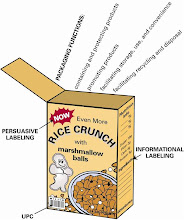Well, today is the final, the last day of class. I have to say that I have learned a lot in this Marketing class. And I'm really grateful for the push to get a blog. I've always wanted to do a blog but never felt like a single girl such as me should need one. Blogging seemed more for those people who were married and had families to stay connected with their family and friends. I love to do journal entries so it was nice to record my thoughts, feelings, learning’s, and whatever else I felt like writing on something that I could resort back to with pictures, comments and a creative way of expressing how my single life has taken place over the years.
The more entries I wrote per each class in marketing the more I felt I understand each concept because I would look up pictures, find things I could compare the concept to and with each experience I could see how marketing places a role in pretty much every day of my life. Although I couldn't add any pictures per each blog, because I couldn't figure that out, hopefully over time I'll grasp this blogging technique and will have a better blog to show in the future.
Thank you Professor Allen for all of your effort and dedication to teaching me and fellow classmates, for the help you rendered and over all the experience I had in Marketing. I hope to pursue in the Marketing field and one day be as successful as I desire.
Christmas Eve
11 years ago



